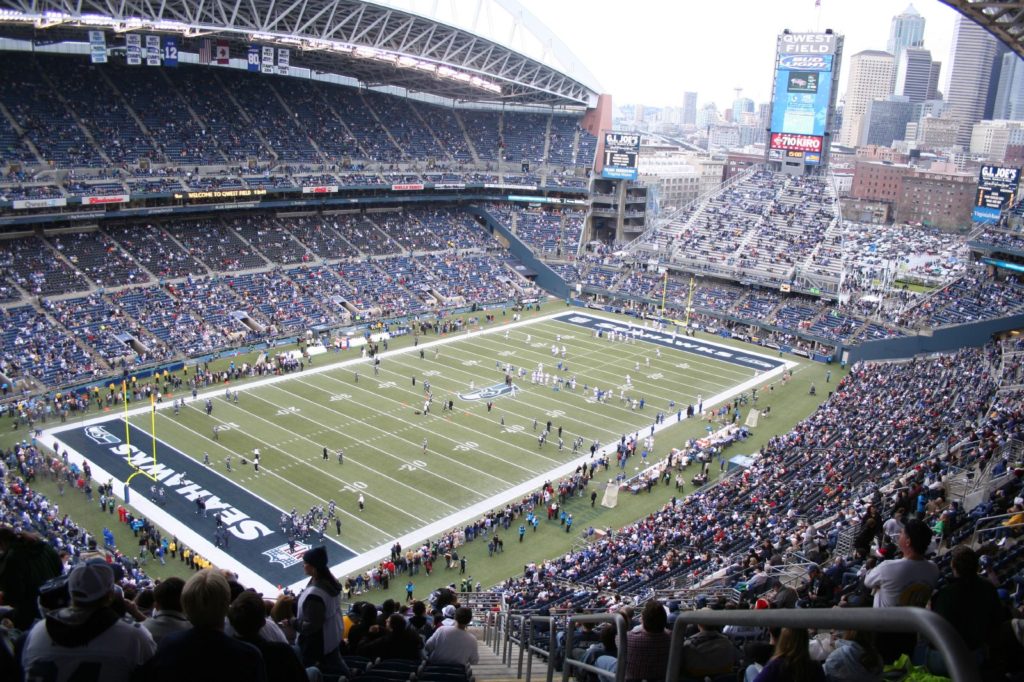
By: Megan Cahill
In American professional sports and the National Football League (“NFL”) specifically, people of color continue to be underrepresented in high-ranking administrative positions.[1] In 2003, the NFL tried to combat its lack of diversity by establishing the Rooney Rule.[2] The Rooney Rule requires “at least one person of color be interviewed as a candidate for head coaching positions,” and it was later expanded to include general manger positions in the NFL as well.[3] Now, more than 15 years after the Rule’s implementation, the number of Black head coaches in the league remains the same as it was in 2003.[4]
The effectiveness and enforceability of the Rooney Rule has been challenged by players, NFL associates, and legal scholars.[5] Today, sixty-nine percent of NFL players are people of color, yet of the thirty-two NFL teams, Black representation in the league is limited to three head coaches, three general managers, and one team president.[6] In recent years, coaching candidates of color suspected that NFL teams were conducting “sham” interviews to avoid fines for violating the Rooney Rule.[7] Additionally, there is evidence of organizations selecting white coaches, and then before formally hiring them, ‘interviewing’ candidates of color only to comply with the Rooney Rule mandates.[8] For example, when the Las Vegas Raiders (formerly Oakland) hired Coach Jon Gruden in 2018, the team owners had already promised him the job before interviewing any people of color.[9] Critics of the Rule’s effectiveness allege the same thing happened after the most recent 2020 season when the Jacksonville Jaguars hired Urban Meyer as head coach despite the fact that he was retired and has no NFL coaching experience.[10]
The effectiveness of the Rooney Rule and prima facie signs of racial disparity in the NFL raise Title VII questions. Title VII of the Civil Rights Act of 1964 prohibits discrimination by employers on the basis of race, color, religion, or sex.[11] People of color who have lost out on NFL jobs to white coaches or managers may likely have valid racial discrimination claims under Title VII, but it is a difficult legal standard to meet.[12] However, Title VII allows for reverse discrimination claims, which would allow white candidates to challenge the Rooney Rule if not hired.[13] Courts established a standard that requires nonminority plaintiffs to they were harmed by their employer’s discrimination. Because of the strict legal standard and the possibility of reverse discrimination claims, candidates of color have rarely challenged the Rooney Rule under Title VII.[14]
Ultimately, the concept behind the Rooney Rule has not been achieved; people of color have not elevated to high-ranking administrative positions within the NFL. The Rule has only marginally diversified high-level positions in the NFL. While it has had some positive impacts in coaching and management, the Rule is not enforceable enough to address the lack of racial representation in the NFL. The NFL should consider increasing the penalty for violating the Rooney Rule or even expand the Rule to cover assistant coaching positions to create more opportunities for people of color.
[1] Matthew J. Mitten, Timothy Davis, Rodney K. Smith, & N. Jeremi Duru, Sports Law and Regulation 710–11 (4th ed., 2017).
[2] Id.
[3] Id.
[4] LZ Granderson, Column: NFL’s Rooney Rule Still Ineffective and Needs Enforcement, L.A. Times (Jan. 6, 2021), https://www.latimes.com/sports/story/2021-01-06/nfl-black-coaches-rooney-rule-enforcement.
[5] See Veronica Coyne, The Rooney Rule, Is the NFL Doing Enough to Increase Minority Head Coaches?, 27 Sports Law. J. 205, 208–09 (2020) (noting a published study comparing coaching statistics between white coaches and coaches of color over fifteen years; Black coaches won more games and clinched more playoff spots than white coaches, and they were also terminated after winning more games than white coaches).
[6] See Mike Florio, Rod Graves: Disparity in Opportunities for Black Coaches is “Mind-Boggling,” NBC Sports (Jan. 19, 2021), https://profootballtalk.nbcsports.com/2021/01/19/rod-graves-disparity-in-opportunities-for-black-coaches-is-mind-boggling/ (noting also that of all the assistant coaches in the NFL, only thirty-five percent are people of color).
[7] See Coyne, supra note 5 at 213–14 (explaining that in “sham” interviews, candidates of color felt they were not being seriously considered for coaching or management roles because many of these interviews occurred without the presence of NFL team owners).
[8] Id. at 214.
[9] See id. (claiming Oakland Raiders owner, Mark Davis, formally hired Jon Gruden on January 6, 2018 but had reached an informal agreement to hire him on December 24, 2017, more than a week before interviewing any candidates of color).
[10] Florio, supra note 6.
[11] Title VII of the Civil Rights Act of 1964, U.S. Equal Employment Opportunity Commission https://www.eeoc.gov/statutes/title-vii-civil-rights-act-1964.
[12] Josh Goldberg, The Rooney Rule and the Lack of Minority Coaches in the National Football League, Sportslaw.org1, 3–4 (June 1, 2020), https://www.sportslaw.org/docs/Josh_Goldberg.pdf; see also Coyne, supra note 5 at 218 (requiring that to make a claim under Title VII, a plaintiff must prove “(i) that he belongs to a racial minority; (ii) that he applied and was qualified for a job for which the employer was seeking applicants; (iii) that, despite his qualifications, he was rejected; and (iv) that, after his rejection, the position remained open and the employer continued to seek applicants from persons of complainant’s qualifications”).
[13] Id.
[14] Id.

